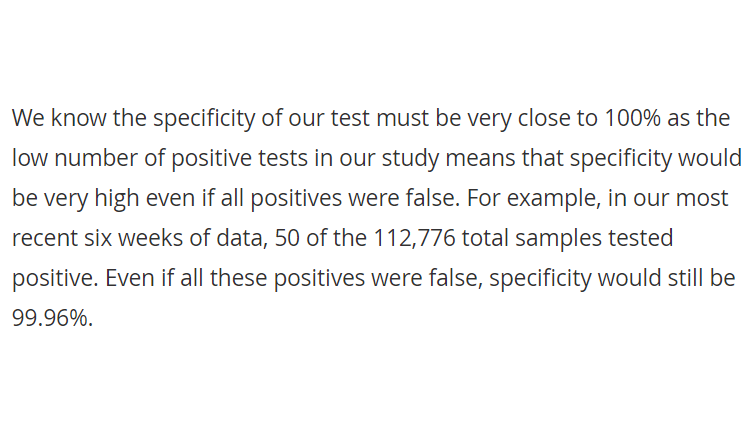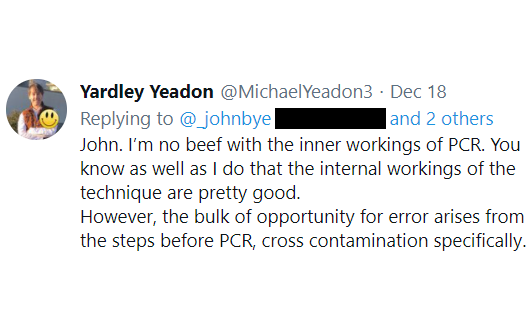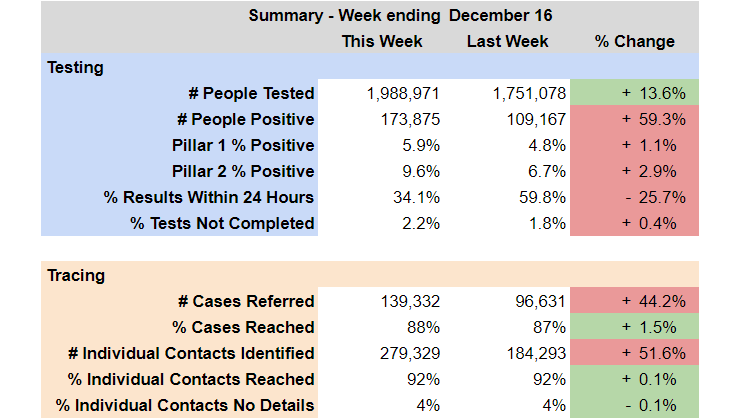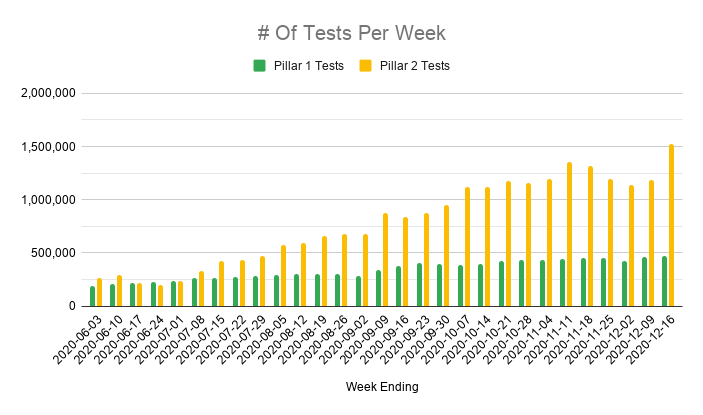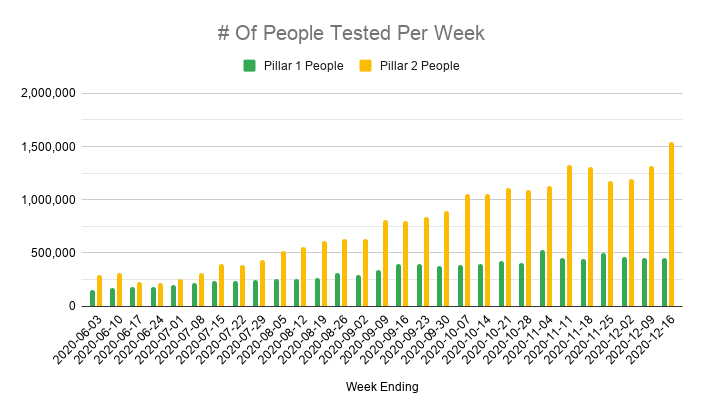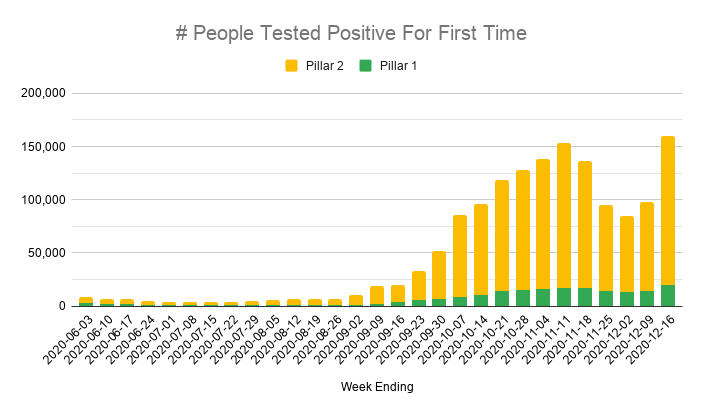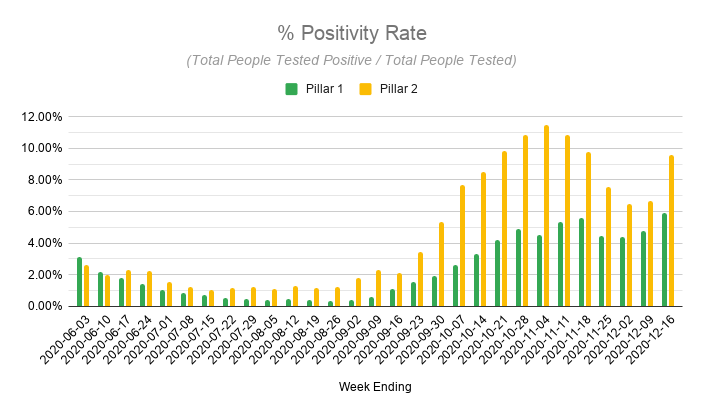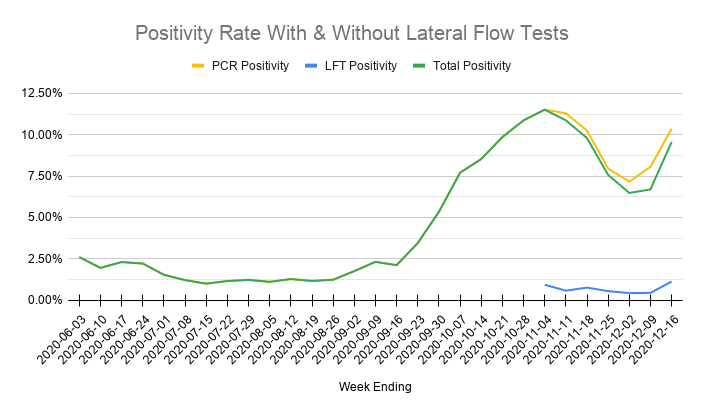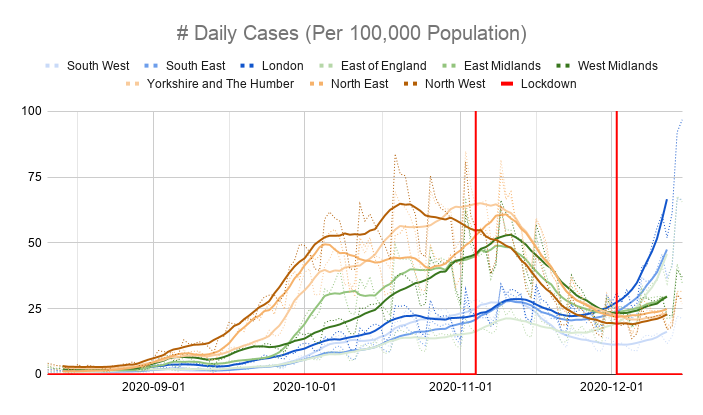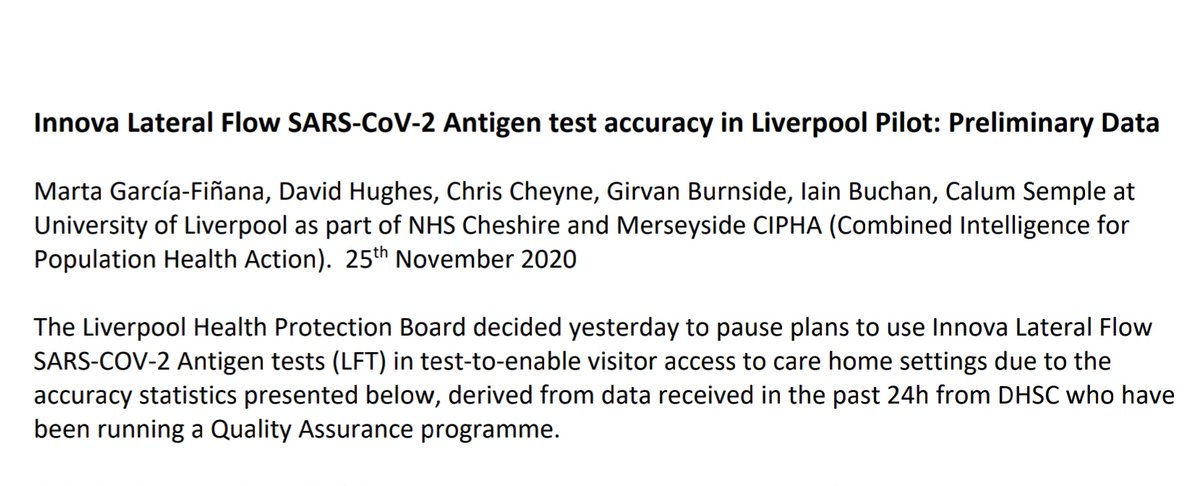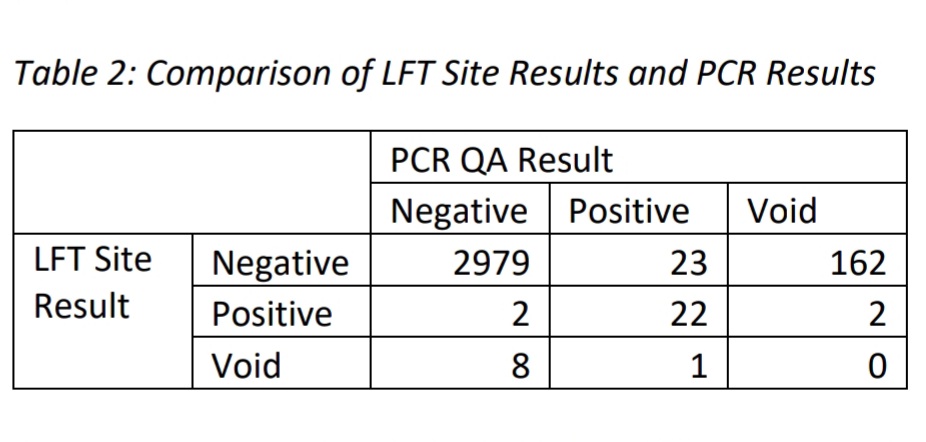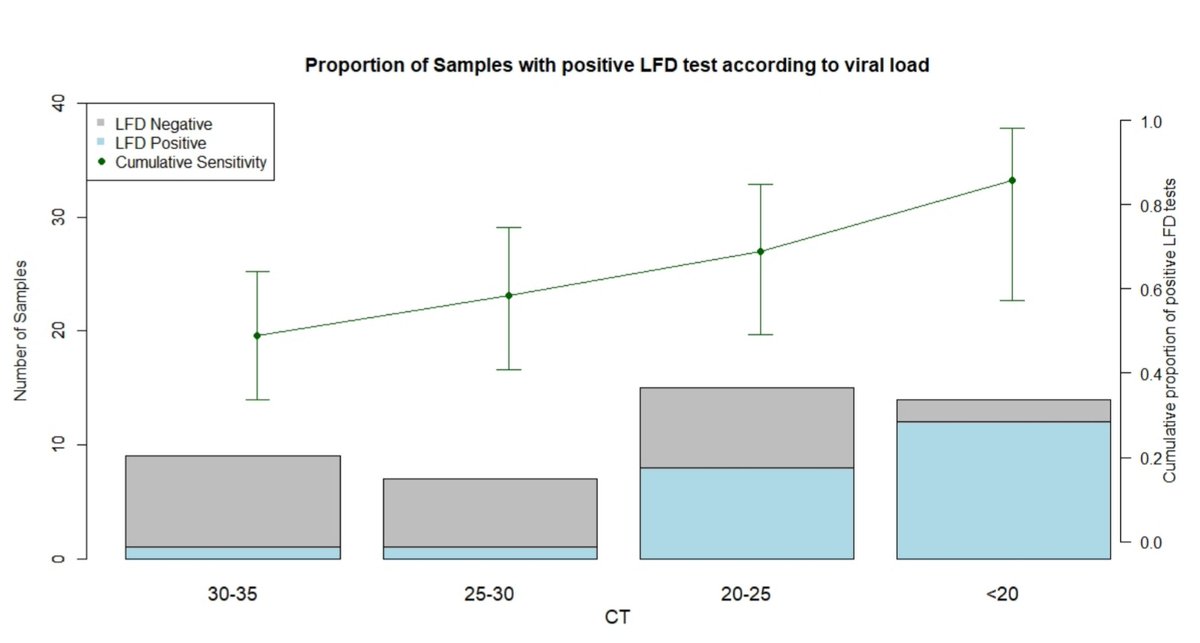
The latest Test & Trace report is out, covering the week before Christmas.
Cases in London and the South East were soaring, and an outbreak of coronavirus at the Lighthouse Lab in Milton Keynes caused further issues in the testing system as demand for tests rapidly increased.
Cases in London and the South East were soaring, and an outbreak of coronavirus at the Lighthouse Lab in Milton Keynes caused further issues in the testing system as demand for tests rapidly increased.

There was another big increase in testing as demand rose, with increasing numbers of quick but less sensitive Lateral Flow Tests being used to screen asymptomatic people.
In total 2.6 million tests were done. But a higher percentage than last week were positive.



In total 2.6 million tests were done. But a higher percentage than last week were positive.
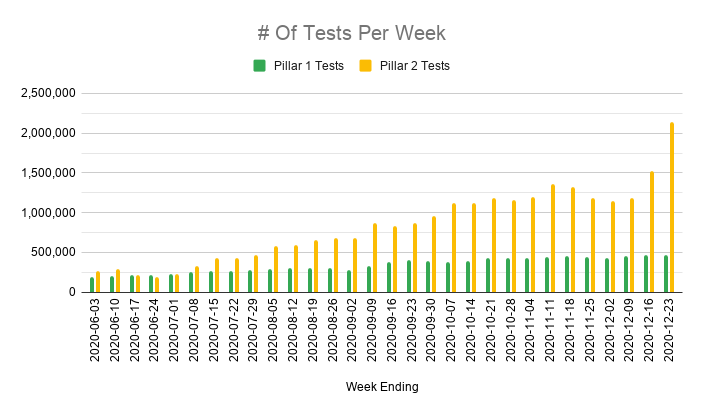


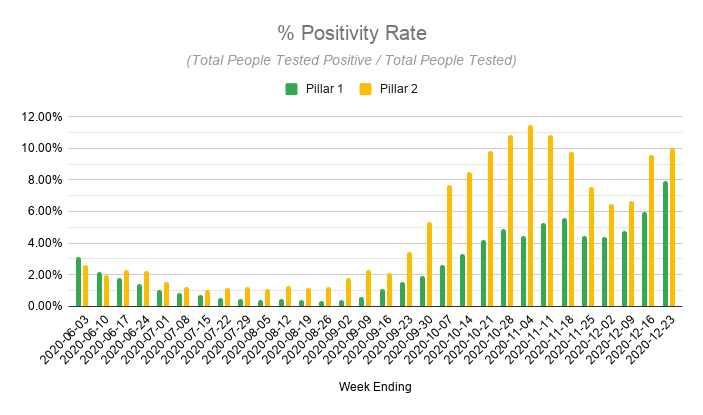
If you separate Lateral Flow (which are ONLY used on asymptomatic people) and PCR (which are used on both symptomatic and asymptomatic people) tests, positivity for PCR is back to the peak last seen at the beginning of November, while positivity for LFTs is rising fast now too. 
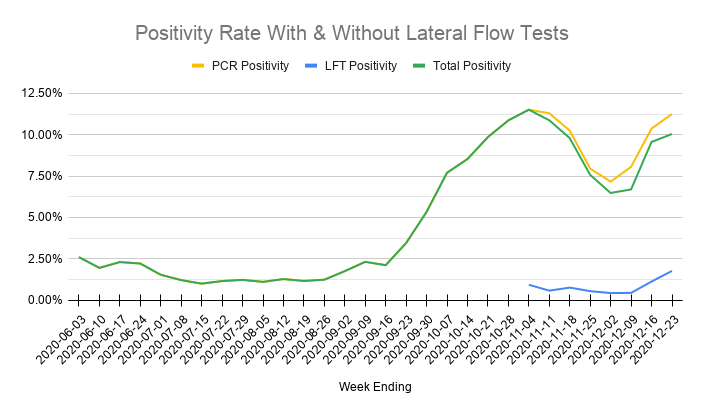
Meanwhile a coronavirus outbreak at the Milton Keynes Lighthouse Lab caused issues, forcing some staff to self-isolate.
With demand rising rapidly and a lab that should handle 70,000 tests a day not running at full capacity, the system was overstretched.
news.sky.com/story/covid-19…
With demand rising rapidly and a lab that should handle 70,000 tests a day not running at full capacity, the system was overstretched.
news.sky.com/story/covid-19…
As a result, the time from taking a test to getting your result increased sharply again.
There's a target to deliver results from all in person tests (at drive in, walk in and mobile test sites) within 24 hours.
This week only 17% of tests met that target.



There's a target to deliver results from all in person tests (at drive in, walk in and mobile test sites) within 24 hours.
This week only 17% of tests met that target.

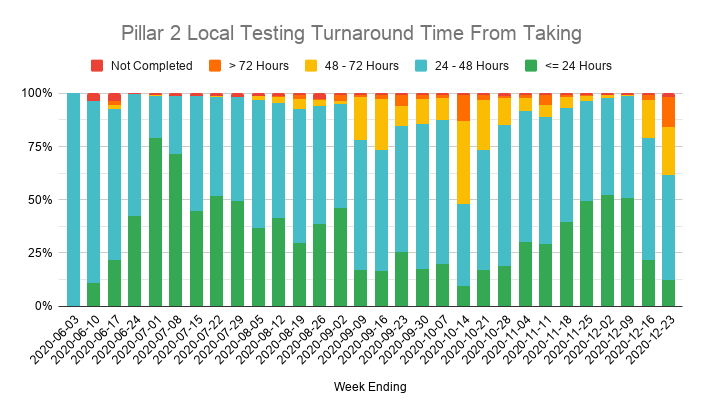


Turnaround times for home test kits and tests at satellite sites such as care homes also increased sharply.
With demand surging, the outbreak at Milton Keynes, and reagent shortages reported the week before that, the last couple of weeks have reversed two months of improvements.



With demand surging, the outbreak at Milton Keynes, and reagent shortages reported the week before that, the last couple of weeks have reversed two months of improvements.



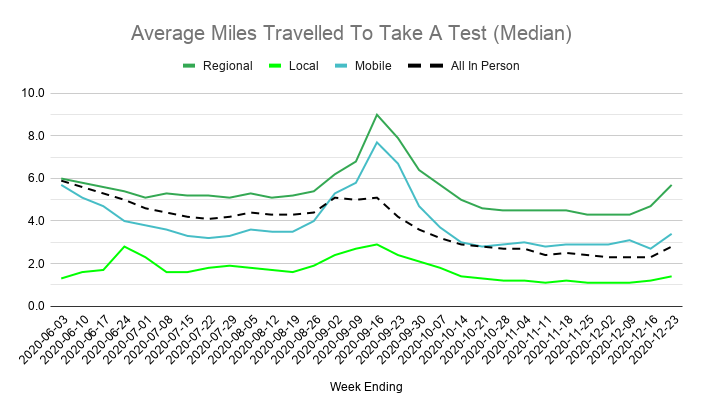
Void rates (where a sample was leaking, damaged etc, or didn't give a clear result) barely changed, but the number of tests "not completed" (where a sample was processed but the person it's from hasn't received their result yet) also rose significantly before Christmas. 



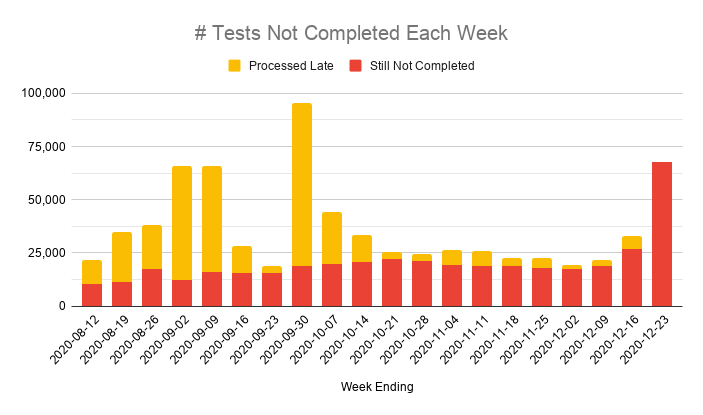



Despite a sharp rise in cases referred to contact tracers, they managed to reach 86% of them (only a slight drop on last week's 88%), and mostly within 24 hours.
A new tab in the spreadsheet also means we now have complete data on HOW cases were reached all the way back to June.



A new tab in the spreadsheet also means we now have complete data on HOW cases were reached all the way back to June.
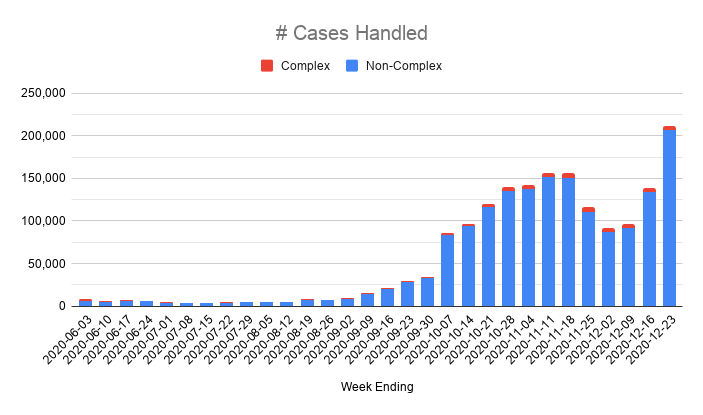
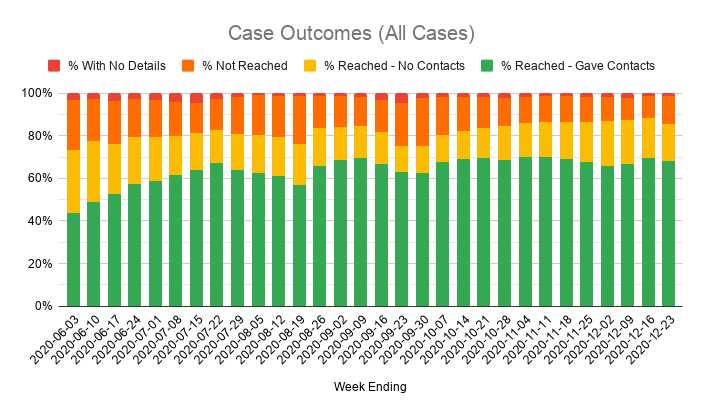

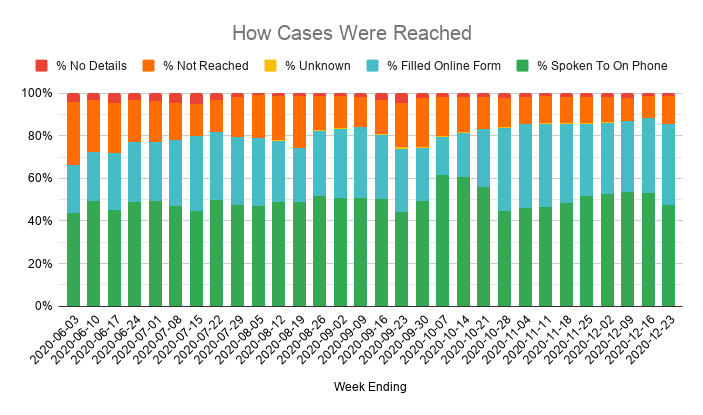
When it comes to reaching the close contacts identified by those cases, most are counted as reached because the person who tested positive is now told to notify everyone in their household to self-isolate.
But performance for non-household contacts isn't improving.



But performance for non-household contacts isn't improving.



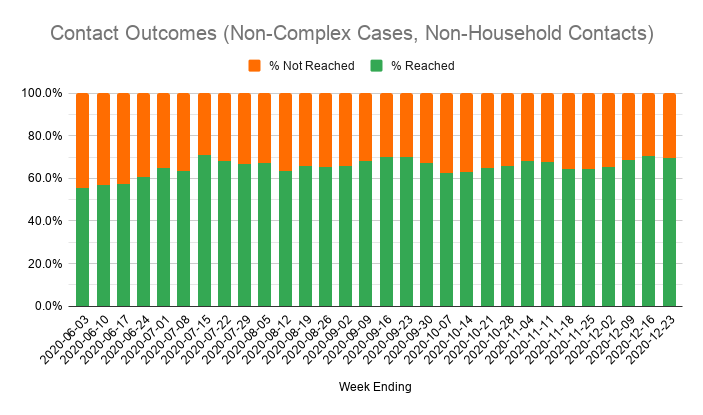
The impact of the change in procedure is dramatically illustrated by another piece of new data, showing how contacts were reached.
Over 80% are now "reached" by the person in their home who tested positive. 10% follow a link to a website for advice. Only 8% are reached by phone.
Over 80% are now "reached" by the person in their home who tested positive. 10% follow a link to a website for advice. Only 8% are reached by phone.
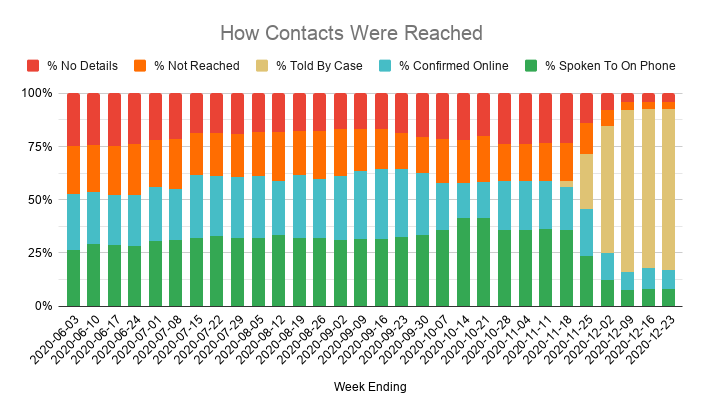
Comparing the numbers before and after the change, it looks like at least 100,000 less phone calls were needed in the week before Christmas than would have been the case under the old system, where contact tracers tried to reach every member of a household individually. 
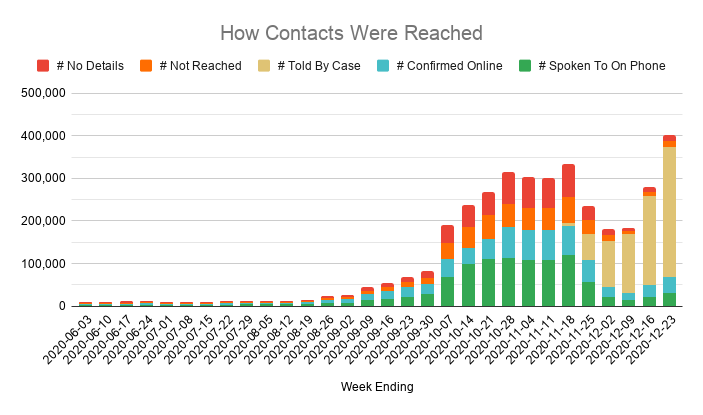
It's also striking how much the percentage of contacts where no contact details were given dropped when this change was first introduced, from 20% to 4%.
This suggests many people testing positive were refusing to give out contact details for other members of their own family.
This suggests many people testing positive were refusing to give out contact details for other members of their own family.
Of course, we don't know if they're actually telling other members of their household to self-isolate, or giving them accurate information on what they need to do.
But it does at least stop families being bombarded by multiple calls from contact tracers, as happened in the past.
But it does at least stop families being bombarded by multiple calls from contact tracers, as happened in the past.
This week's (cut down) Test & Trace report and accompany data can be found here.
gov.uk/government/pub…
gov.uk/government/pub…
And here's my analysis of last week's report for comparison.
Note: I've swapped the columns around in the Summary table now, as I felt it makes more sense to show Last Week's numbers first, then This Week's numbers, and finally the change between them.
Note: I've swapped the columns around in the Summary table now, as I felt it makes more sense to show Last Week's numbers first, then This Week's numbers, and finally the change between them.
https://twitter.com/_johnbye/status/1342785035292667905?s=20
• • •
Missing some Tweet in this thread? You can try to
force a refresh

